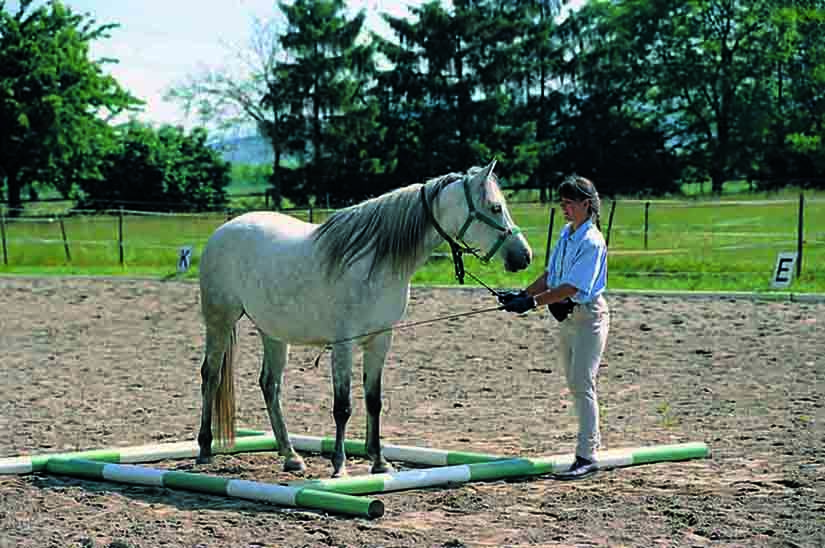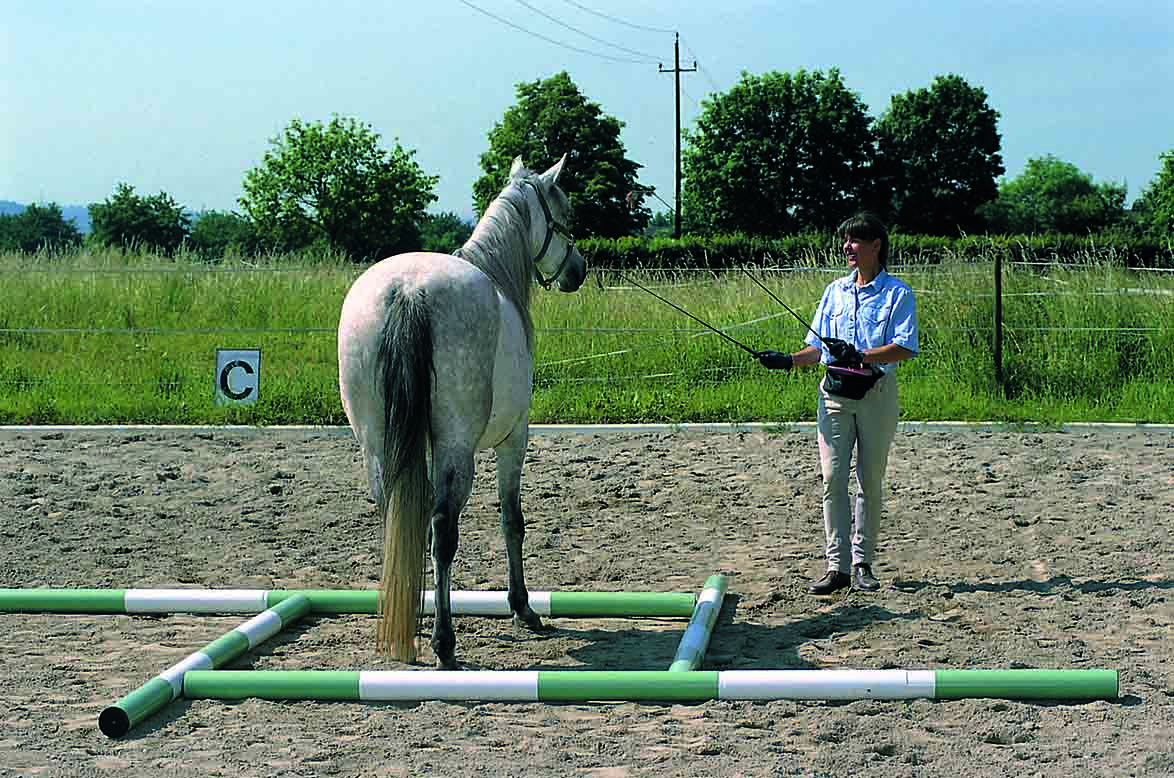Many riders and trainers undervalue the benefits of trick training—you know: teaching your horse to bow, sit, paw or nod on cue…maybe carry things around the barn or arena…and who-knows-what other playful freestyle variations are possible. The truth is, giving a horse a break from standard schooling and “round and round we go” not only keeps him engaged in the learning process and connected with you, his rider and trainer, it also helps build important foundation skills integral to top performance in any and all disciplines.
Consider, if you will, how often you ask your horse to stand square and still and remain that way until cued to move. This skill—useful both on the ground and in the saddle—is actually a beginner trick, and you can teach your horse how to do it using fun, positive, trick-training methods. In this lesson from her bestselling book, Trick Training for Horses, well-known performer and classically trained rider Bea Borelle (student of Richard Hinrichs and wife of Philippe Karl) tells us how to train our horses to perform what she calls The Statue.
•••
The Statue is a lesson in which the horse learns to stand, at liberty, in various situations without a handler nearby. In mastering this, your horse also learns to be led, to halt, and to accept the touch of the whip all over his body. It is best that you practice this exercise in an enclosed indoor or outdoor arena.
Arrange four poles in a rectangle on the ground. The rectangle should be at least 20 inches longer and wider than the horse.

Photo from Trick Training for Horses by Bea Borelle and used by permission from Trafalgar Square Books.
Lead the horse into the rectangle, and while he stands next to you, hold the lead rope in a way that encourages him to remain still as you stroke his forelegs from top to bottom with your dressage whip—this helps “ground” the horse on the spot. Praise your horse verbally and stroke him with the whip when he stands quietly. After a minute, lead him out of the rectangle. In the future, stroking the horse with the whip will be the signal for immobility as well as the “off” button for other exercises.
Again lead your horse into the rectangle, bring him to a halt, and let him stand there while you stand outside the rectangle. Stroke the horse with your whip from an increased distance with more slack in the lead. After a minute or two, end the exercise by leading your horse out of the rectangle, maintaining your distance. Do not forget verbal praise!
Lead your horse into the rectangle again and halt him. Secure the end of the lead rope in a safe way near the halter so the free end isn’t dangling.

Photo from Trick Training for Horses by Bea Borelle and used by permission from Trafalgar Square Books.
Now use two dressage whips, one in each hand, and stroke your horse very calmly, using long strokes on both sides of his body. Stroke him beneath his neck, on his chest, and along his forelegs; then over his back and croup to his hind legs (use a downward stroke). In this way, the horse is “encircled” and given a “touch” boundary in front and behind him. If the horse moves his head to right or the left, or drops it down, touch him lightly and gently on the head to signal him to lift it up again or straighten it out.
Move from one side to the other in front of the horse and repeat the stroking on the other half of his body. Go behind the horse and back to his front. Your horse will stand quietly because he will feel comforted by the stroking and verbal praise.
Reward him with treats and lead him out of the rectangle.
Again halt your horse in the rectangle, create an even greater distance between the two of you, and let him stand without being stroked. Walk around him and reward him with a treat if he stands quietly until the end of the exercise. If the horse wants to leave the rectangle, raise your whip in front of him as an “optical brake,” and dissuade him with your voice. If your signals from a distance are not effective, calmly and in a friendly manner lead him back into the rectangle. Whenever you are not successful advancing a step, go back to the previous phase of the exercise and start again.
Finally, practice The Statue by walking around the horse without the poles as a boundary and without having the whips in your hands. Try it in other parts of the arena. If the horse has trouble moving to a new location, set the poles up in the new spot, review previous steps, and take them away later on. If your horse does not understand a particular phase of the exercise, progressively reduce your demands until you find common ground.
•••

This excerpt from Trick Training for Horses by Bea Borelle was used by permission from Trafalgar Square Books.




 April 20, 2016
April 20, 2016 






















